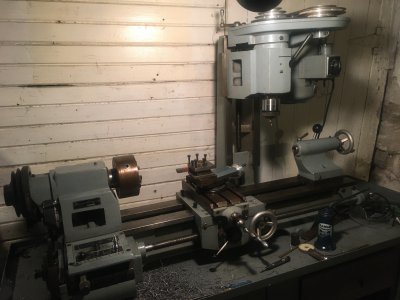I would check the geometry of the machine and spindle runout before I went with further given that it's a Frankenmill.
I'm just finishing up an early 1900's Steptoe horizontal that'd been retrofitted with a Tree vertical head, and while the table itself had seen a couple of ugly crashes in its prior life as a horizontal mill it was in decent shape. Some significant scarring of the flat ways like you have- but plenty of good bearing surface still. Stone the heck out of it, clean it and lube the ways then some basic checks one would usually make.
The head doesn't tilt or nod- so I would first confirm the squareness of the table in both axes to the quill. It's one thing to cobble together a drill press, quite another for the precision of a miller- much less a jig borer. I'd stone the table, and sweep it with an indicator off the quill. Check the quill bearings, etc. with an indicator inside the taper to see what kind of runout you have.
Hopefully it all checks out at least good enough for a hobbyist machine, but I wouldn't want to spend weeks disassembling, cleaning, lubing etc. only to find out the quill bearings were shot or the table isn't square.
Good luck, keep us posted on the progress. I've got a weakness for old iron myself




